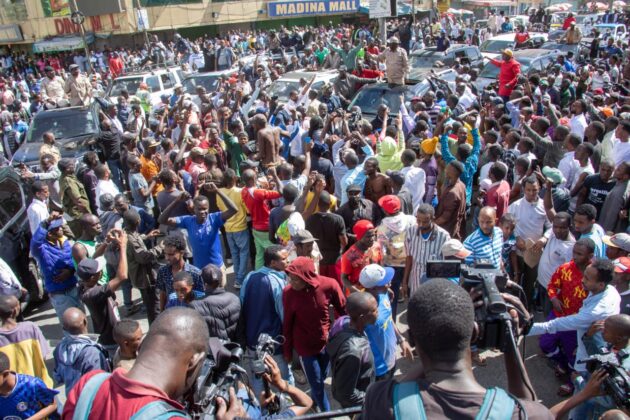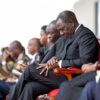NAIROBI, Kenya Mar 21 – Azimio Leader Raila Odinga’s history of protests and mass action continues to shape his political career even though the presidency appears elusive.
Odinga has participated in the presidential race in Kenya five times and has become closely associated with the frequent protests after his election defeats.
The veteran opposition leader participated in the presidential elections in 1997, 2007, 2013, 2017, and 2022.
Save for the 1997 election where Odinga emerged fourth, in all the other elections he has contested the results and organized mass demonstrations in the country in protest of his stolen victory.
Whereas article 37 of the Constitution allows for the right to peaceful assembly and protest, they have often turned chaotic and disruptive.
The 2007 – 2008 protests were Kenya’s most violent one that saw close to 1, 000 people killed and massive destruction of property in the ensuing clashes.
The violence ended after Odinga and former President the late Mwai Kibaki entered into a power-sharing agreement that birthed the Grand Coalition government.
Violence also took place in the subsequent elections after Odinga disputed the outcome of the election.
In the 2017 post-election violence, it took a peace agreement between Odinga and former President Uhuru Kenyatta for calm to prevail.
After losing the 2022 presidential contest to President William Ruto, Odinga is back at it again on the streets and has accordingly vowed to lead weekly protests every Monday in protest of his stolen victory.
Odinga alleges that he won the election by a margin of 200, 000 votes with his claim attributed to a whistleblower.
The former Prime Minister in fact unsuccessfully mounted a legal challenge at the Supreme Court challenging the outcome of the election.
-Game Plan-
Odinga has been insistent that he does not want to enter into a working agreement with President Ruto.
“I am not looking for a handshake,” he once said.
Instead, Odinga wants the President to make life bearable for the millions of Kenyans who are struggling to make ends meet.
Reviving the economy and bettering the fortunes of millions of Kenyans was among the key issues President Ruto rode on to get to State House.
Odinga is also pushing for electoral reforms in the country and wants the ongoing recruitment of new commissioners at the electoral body halted.
President Ruto has however been very dismissive of Odinga’s demands and committed not to engage with “anarchists” who were out to destabilize his administration.
“I am ready to engage with any leader if we are discussing the future of our country, the destination of our nation in a constitutional and legal manner. But we are not going to engage in anarchy,” President Ruto said last Sunday during a thanksgiving service in Nandi.
Whereas the protests have proven to be detrimental to the country’s economy, Odinga is pushing forward and on Monday rallied his supporters to turn out in large numbers for their next protest.
Deputy President Riagthi Gachagua has since revealed that Sh2 billion was lost because of the protests on Monday and urged Odinga to reconsider his actions.
“What they are doing is destroying the economy. We had started showing signs of recovery from the economic downturn,” he said.
-Protests impact-
Mass action, including protests, has played a significant role in shaping the political landscape of African countries.
The protests have been successful in countries such as Tunisia during the Arab Spring protests that led to the ousting of President Zine El Abidine Ben Ali and the establishment of a democratic government.
The Burkina Faso uprising in 2014, led to the ousting of President Blaise Compaoré, who had been in power for 27 years.
The Sudanese protests in 2019, began as a response to rising food prices and evolved into a larger movement calling for the ousting of President Omar al-Bashir. The protests ultimately succeeded, and a transitional government was established.
Egypt: In 2011, the Egyptian Revolution, also known as the January 25 Revolution, was a series of mass demonstrations and protests that led to the ousting of President Hosni Mubarak, who had been in power for over 30 years.


























































